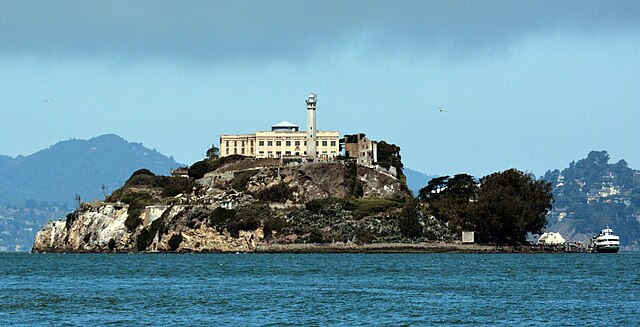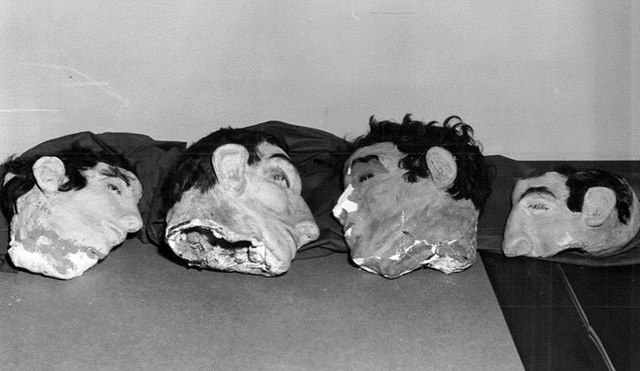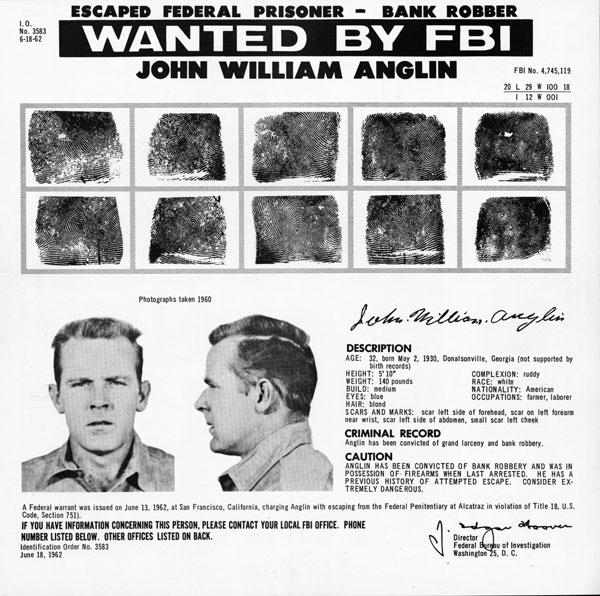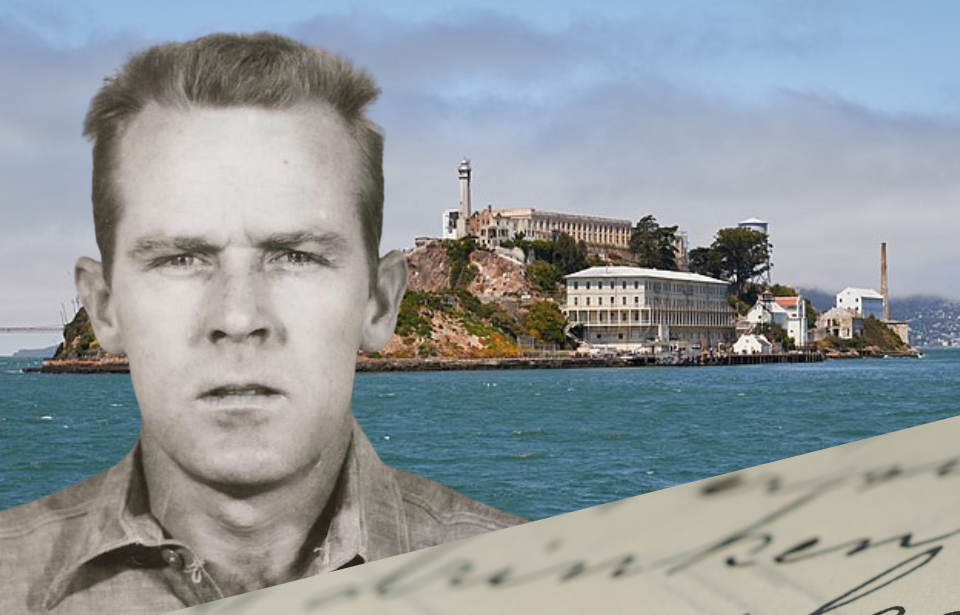On June 11, 1962, one of the most daring prison escapes in history was carried out by three men; Frank Morris and brothers John and Clarence Anglin escaped from Alcatraz, never to be seen again. The Federal Bureau of Investigation (FBI) closed its case in 1979, after concluding the men drowned and their bodies had been swept out to sea. However, 51 years after the event, one of the escapees allegedly sent a letter to police, claiming he was very much alive.
Alcatraz housed some of America’s most notorious criminals

Alcatraz was notorious in its heyday for its harsh conditions and its infamous inmates. Originally operated as a military base during the American Civil War, it was turned into a federal prison in 1934 and went on to hold the likes of Al Capone, George “Machine Gun Kelly” Barnes and Whitey Bulger.
It was the place where prisoners were sent when they were deemed too disruptive for other federal facilities. As it was considered a high-security facility and built on an island, Alcatraz was thought to be inescapable by prison authorities. While the island is only 1.25 miles from the shores of San Francisco, the waters surrounding it are almost freezing and prone to rip tides, making the swim to the mainland a treacherous endeavor for even the strongest athletes.
Alcatraz’s location in the middle of the sea also meant that the facility fell victim to erosion and disrepair as the years went on. As such, in 1963, it was shuttered, by order of then-US Attorney General Robert F. Kennedy.
The escape attempt that captured the public’s imagination

Frank Morris, along with John and Clarence Anglin, were career criminals with multiple sentences and escape attempts between them. They knew each other from a previous prison stay and began planning their escape in 1960, with the aid of fellow prisoner, Allen West. By the next year, they’d been placed in adjacent cells.
The plan, devised by Morris, involved widening the ventilation ducts in their cells, which led into an unsupervised utility corridor. They did this using canteen spoons and a makeshift drill. During the day, they disguised their work behind papier-mâché facades. By night, they worked in a secret rooftop workshop constructing a raft and life jackets from 50 stolen raincoats.
By 11:30 PM on June 11, 1962, three of the four men escaped Alcatraz, never to be seen again. West was left behind, as he’d been unable to break through the ventilation grates.
The alarm was only raised the morning after when the guards discovered their beds were empty. The trio created life-like dummy heads out of concrete dust, papier-mâché, soap and hair from the barber shop and used them to simulate sleeping bodies in their bunks.
Did the three men survive their escape from Alcatraz?

The escape attempt captured the public’s imagination, turning John Anglin, Frank Morris and Clarence Anglin into folk heroes. Rumors persist to this day that the three, all young and reportedly strong swimmers, survived and disappeared, evading capture for over 50 years.
In the immediate aftermath, much evidence was found, including a homemade life vest, pieces of wood and rubber bags holding their personal belongings. Tips also came in from locals and seafarers alike, with a Norwegian freighter even calling the police to report a body floating in the water near the Golden Gate Bridge.
While the FBI closed its investigation in 1979 on the presumption all involved had drowned during the escape attempt, the US Marshal Service still has active arrest warrants for the three men. These will remain active until the men hit 100 years old, are arrested or evidence presents itself that they are deceased.
Did John Anglin send a letter to the San Francisco Police Department?

In 2013, the San Francisco Police Department received a letter that was apparently written by an aging John Anglin. However, it wasn’t released to the public until five years later. In the opening paragraph, the author writes, “My name is John Anglin, I escape from Alcatraz in June 1962. Yes we all made it that night, but barely!”
The letter states that Frank Morris and Clarence Anglin passed away in 2005 and 2008, respectively. The author then goes on to offer to give themself up to authorities in exchange for medical treatment, as they had been diagnosed with cancer, and a one-year prison sentence. As confirmation, investigators would need to make the announcement on television. Only then would the person alleging to be Anglin “write back to let you know exactly where I am.”
More from us: The Chilling Unsolved Case of the Keddie Cabin Murders
The FBI took the letter seriously enough to complete handwriting analysis, fingerprinting and DNA tests, all of which came back inconclusive. Since it was delivered, there has been no further correspondence. If he had survived the escape from Alcatraz, John Anglin would be celebrating his 94th birthday on May 2, 2024.
